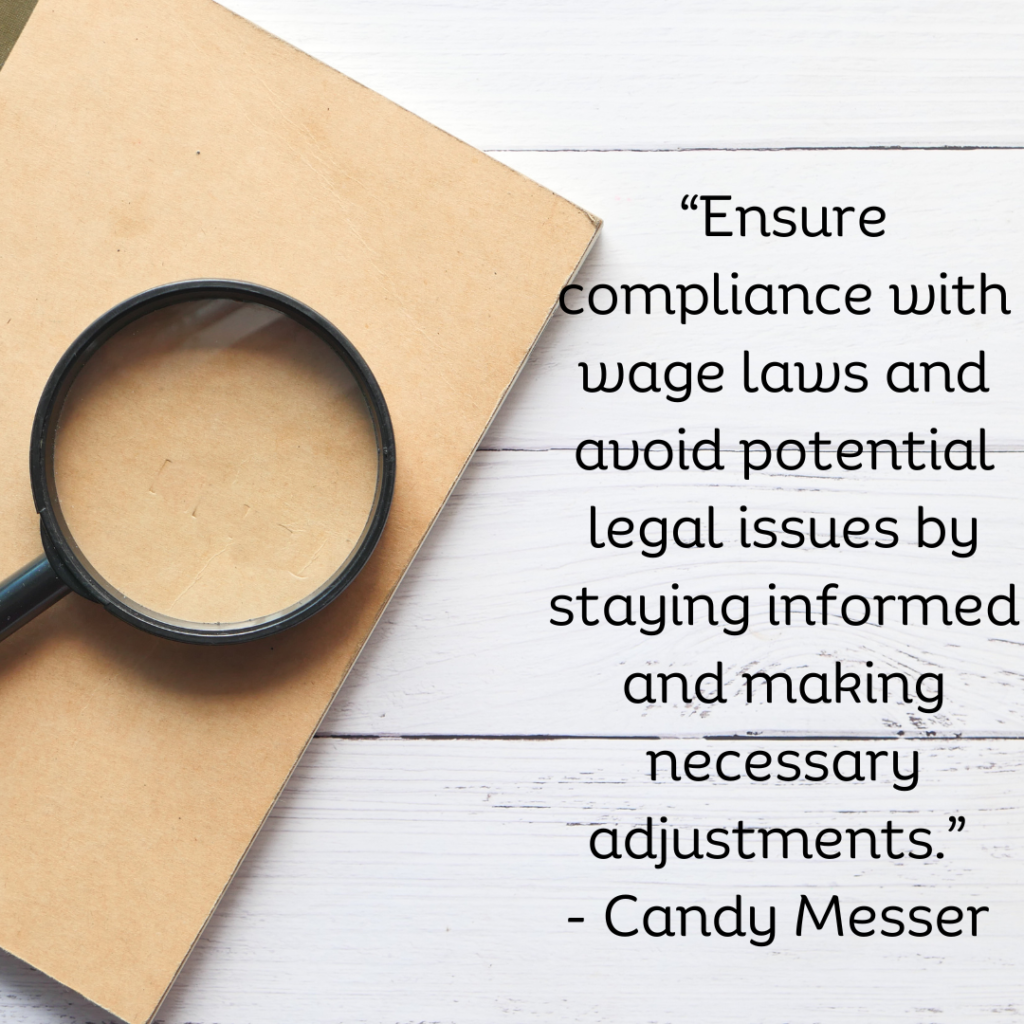If you’re feeling frustrated and overwhelmed by the constant changes to minimum wage increases, as well as the complex legal requirements that come with it, then you are not alone! Many employers find themselves struggling to keep up with the ever-evolving wage laws, leading to potential legal issues and non-compliance. Despite their efforts to stay informed and take necessary actions, employers may still face challenges in achieving the desired result of avoiding legal problems and ensuring compliance with wage laws. #minimumwage2024 #wagelaws #faircompensation #overtimelaws #tipworkers #laborlaws #CandyMesser #BizHelpForYou#Podcast

Key Notes
- Discover the upcoming minimum wage increases for 2024 and stay ahead of the game to ensure compliance with wage laws.
- Understand how minimum wage increases can impact salary workers and ensure fair compensation for your employees.
- Learn the rules and exemptions for overtime pay for salary workers, avoiding any potential legal issues.
- Uncover the minimum wage variations and requirements for tipped workers, ensuring your business meets the necessary guidelines.
- Gain insights into the different classifications of exempt employees under the FLSA, helping you navigate the complexities of labor laws.
Resources
- Check the Department of Labor website for the most up-to-date information on minimum wage increases for 2024.
- If you have employees in Alaska, make sure to find out the new minimum wage rate for compliance.
- For business owners in California, be prepared to pay employees $16 per hour starting in 2024.
- Stay informed about minimum wage increases in Connecticut, Delaware, Florida, Hawaii, Illinois, Maine, Maryland, Massachusetts, Minnesota, Missouri, Montana, Nebraska, Nevada, New Jersey, New York, New Mexico, Oregon, Rhode Island, Ohio, Washington, and the District of Columbia.
- Be aware that some states allow lower minimum wages for tipped workers, so make sure you understand the requirements for your state.
- Remember that minimum wage requirements may vary within a state, so pay attention to the rates in the specific locations where your employees work.
- Provide notice of pay increases to employees in locations with different minimum wage rates.
- Ensure that all changes in minimum wage rates are reflected in wage statements or posted notices in a conspicuous place.
- Consider the impact of minimum wage increases on employees earning above the minimum wage and how it may affect labor costs and other payroll-related expenses
